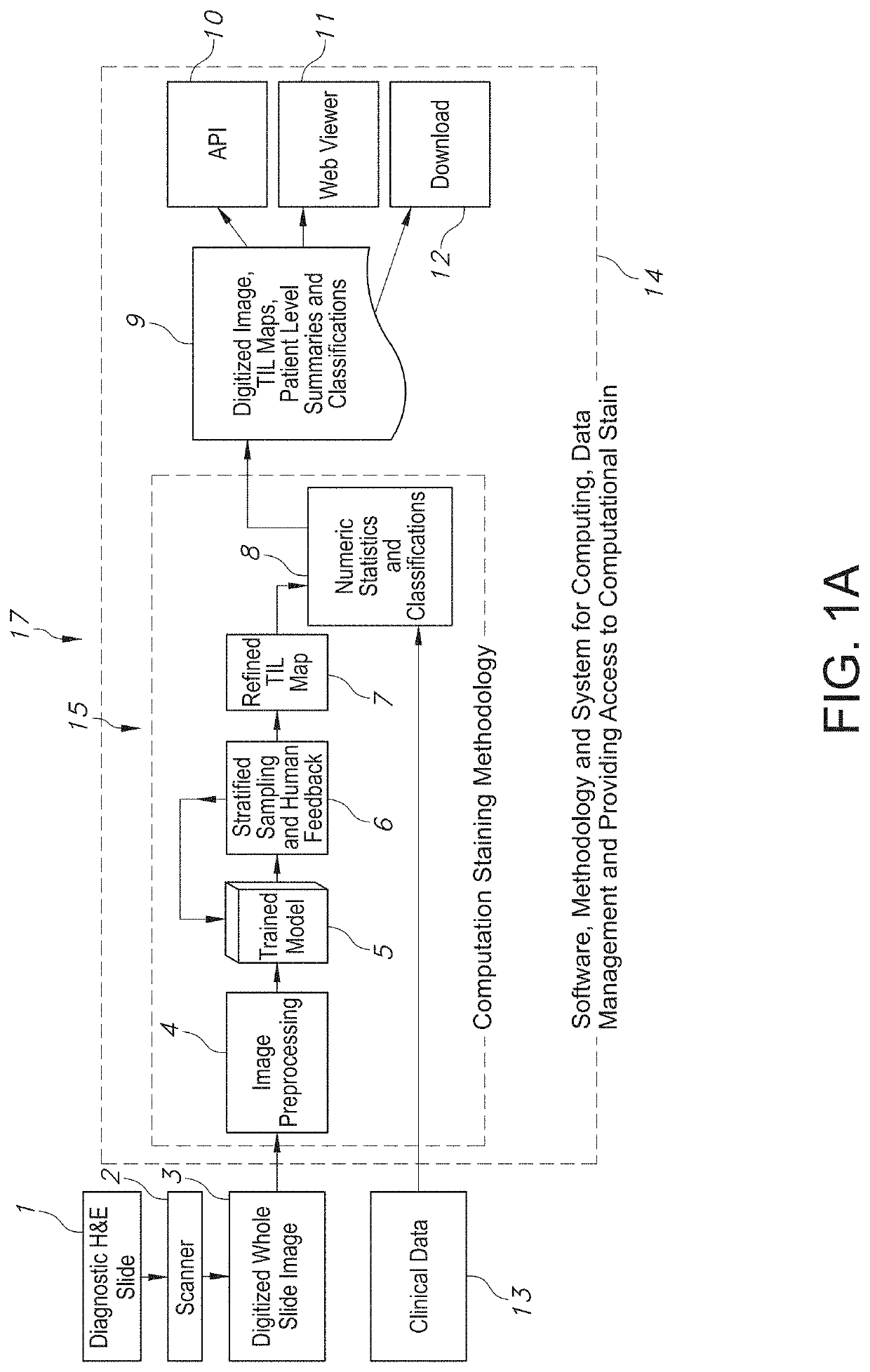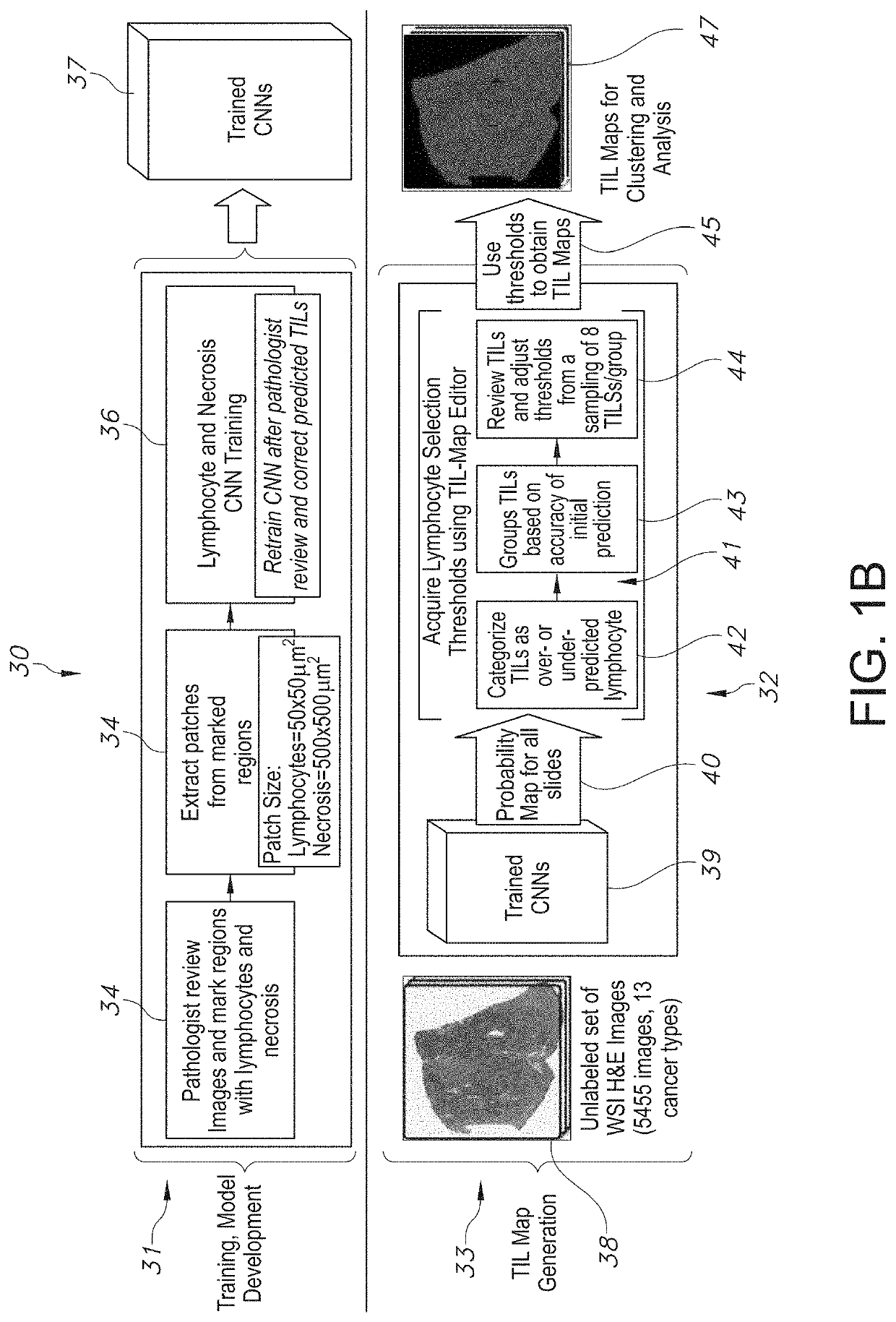System and Method to Quantify Tumor-Infiltrating Lymphocytes (TILs) for Clinical Pathology Analysis Based on Prediction, Spatial Analysis, Molecular Correlation, and Reconstruction of TIL Information Identified in Digitized Tissue Images
a tumor-infiltrating lymphocyte and clinical pathology technology, applied in image analysis, image enhancement, instruments, etc., can solve the problems of insufficient generating targeted and useful diagnostic assessments and/or refined classifications, set of input parameters that will not perform well across multiple images, and segmentation pipeline optimized for a tissue type will produce bad segmentation in images from other tissue types
- Summary
- Abstract
- Description
- Claims
- Application Information
AI Technical Summary
Benefits of technology
Problems solved by technology
Method used
Image
Examples
Embodiment Construction
[0078]In the following description, for the purposes of explanation, numerous specific details are set forth in order to provide a thorough understanding of example embodiments or aspects. It will be evident, however, to one skilled in the art, that an example embodiment may be practiced without all of the disclosed specific details.
[0079]The present disclosure relates to a system and method associated with clinically processing, analyzing, and quantifying tumor-infiltrating lymphocytes (TILs) based on prediction, spatial analysis, molecular correlation, and reconstruction of TIL information associated with copious digital pathology images. Even more particularly, the present invention relates to a novel system and method that trains a classification model in order to predict the respective labeling of TILs associated with computationally stained and digitized whole slide images of Hematoxylin and Eosin (H&E) stained pathology specimens obtained from biopsied tissue, and spatially c...
PUM
 Login to View More
Login to View More Abstract
Description
Claims
Application Information
 Login to View More
Login to View More - R&D
- Intellectual Property
- Life Sciences
- Materials
- Tech Scout
- Unparalleled Data Quality
- Higher Quality Content
- 60% Fewer Hallucinations
Browse by: Latest US Patents, China's latest patents, Technical Efficacy Thesaurus, Application Domain, Technology Topic, Popular Technical Reports.
© 2025 PatSnap. All rights reserved.Legal|Privacy policy|Modern Slavery Act Transparency Statement|Sitemap|About US| Contact US: help@patsnap.com



